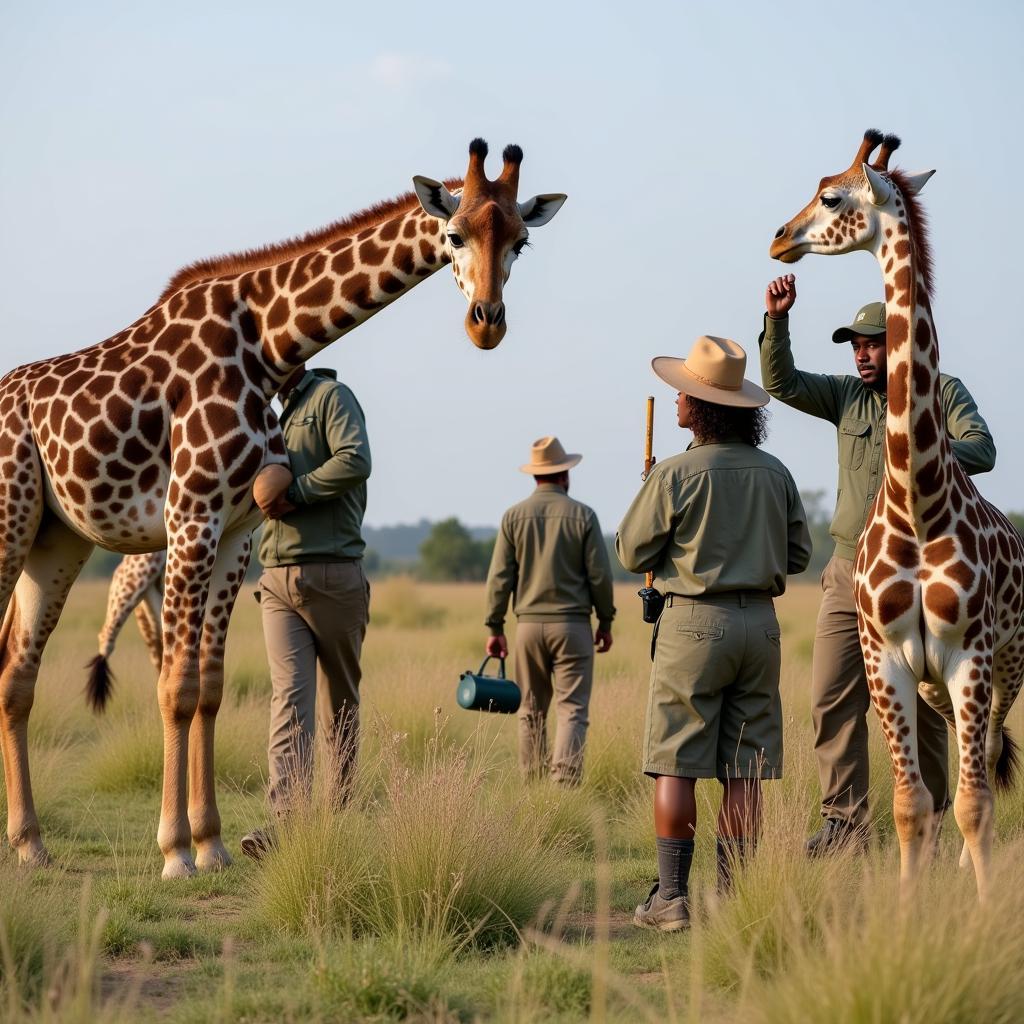African Elephant with the Largest Tusks on Record
The African Elephant With The Largest Tusks On Record is a testament to the magnificence of these creatures. These colossal ivory appendages, weighing hundreds of pounds, have captivated humans for centuries, symbolizing both strength and vulnerability. But what do we really know about these record-breaking tusks and the elephants that carried them?
Unearthing the Giants: Exploring the Largest Tusks
The quest to find the African elephant with the largest tusks has led to fascinating discoveries and, unfortunately, tragic tales. Historically, elephants boasting exceptionally large tusks were prized targets for ivory hunters. This relentless pursuit decimated populations and dramatically skewed the gene pool, making giant tuskers increasingly rare. One of the most famous examples is a pair of tusks, each weighing over 200 pounds, discovered in the late 19th century. These behemoths belonged to an elephant killed in Kenya, and to this day, they remain some of the heaviest tusks ever recorded. The search for the African elephant with the largest tusks often leads to discussions about conservation and the devastating impact of poaching.
It’s important to distinguish between the African bush elephant and the African forest elephant. Bush elephants are generally larger and possess larger tusks than their forest-dwelling counterparts. This also impacts tusk size. You can learn more about the sizes of these magnificent animals by reading about the African bush elephant size.
The Significance of Tusk Size in African Elephants
Why do some African elephants develop such massive tusks? A combination of genetics and environmental factors plays a crucial role. Elephants use their tusks for a variety of purposes, from digging for water and minerals to stripping bark from trees and defending themselves against predators. Larger tusks might have provided an advantage in these activities, leading to their selection over generations. However, the excessive hunting of large-tusked elephants has disrupted this natural selection process, possibly leading to a decline in average tusk size in some populations. You can find more information on the variation in African elephant tusk size.
How Big Can Elephant Tusks Get?
The question of “how big can elephant tusks get” depends on several factors, including species, genetics, and environmental conditions. While the largest recorded tusks are truly exceptional, they highlight the potential for these magnificent appendages to reach extraordinary sizes.
Even an African elephant attack lion demonstrates the power of these massive animals. This power is often represented by their impressive tusks.
Protecting Giants: Conservation Efforts for Elephants with Large Tusks
The pursuit of the African elephant with the largest tusks has had a devastating impact on elephant populations. Today, conservation efforts are focused on protecting these magnificent creatures from further harm. Anti-poaching patrols, community involvement, and international collaborations are crucial for ensuring the survival of elephants with both large and small tusks. Understanding the factors that influence tusk size, including genetics and environment, is essential for developing effective conservation strategies.
What is being done to protect elephants with large tusks?
Various organizations and governments are actively working to protect elephants, including those with large tusks, through anti-poaching patrols, habitat preservation, and raising awareness about the ivory trade. These combined efforts are vital for ensuring the long-term survival of these magnificent animals.
Knowing the African bull elephant height can help in understanding their size relative to their tusks. It also helps visualize the sheer scale of these incredible animals. You can also learn more about African elephant weight kg.
Conclusion: The Future of Elephants with Large Tusks
The African elephant with the largest tusks on record serves as a poignant reminder of the grandeur and vulnerability of these iconic animals. Protecting elephants and their habitats is crucial for ensuring that future generations can marvel at the magnificence of these creatures, regardless of their tusk size.
FAQ
- What are the largest elephant tusks ever recorded?
- How do elephants use their tusks?
- Why are large tusks desirable to poachers?
- How does poaching affect elephant populations?
- What can be done to protect elephants from poaching?
- What are the differences between African bush elephants and African forest elephants regarding tusk size?
- How does genetics influence the size of elephant tusks?
Scenarios
-
Scenario: You witness someone selling ivory.
Question: What should you do? -
Scenario: You’re researching the history of ivory trade.
Question: Where can you find reliable information?
Further Exploration
Explore other related articles on our website, such as “The Impact of Poaching on Elephant Populations” and “Conservation Efforts for African Elephants.”
Contact us for support at: Phone: +255768904061, Email: kaka.mag@gmail.com Or visit us at: Mbarali DC Mawindi, Kangaga, Tanzania. We have a 24/7 customer service team.


